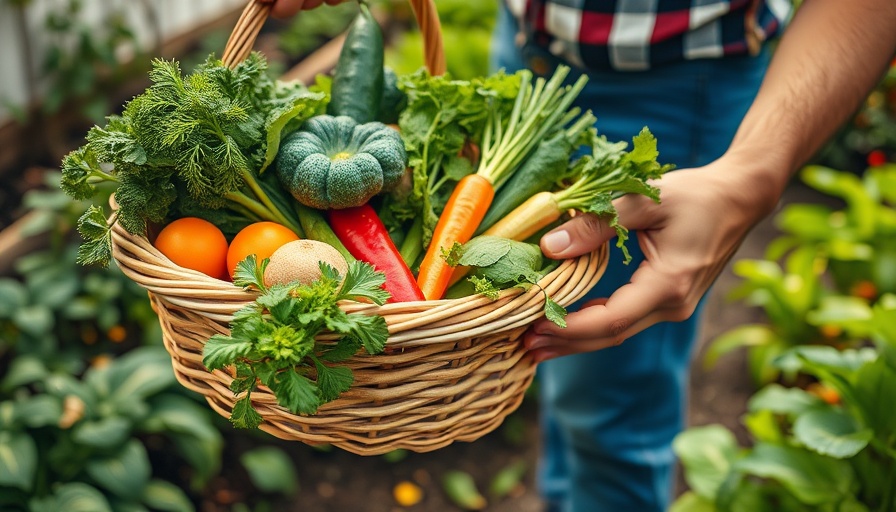
Transform Your Backyard: The Rise of Vegetable Gardening
In recent years, backyard vegetable gardens have seen a transformative surge. No longer relegated to just decorative aesthetics, more homeowners are viewing their outdoor space as vital to self-sufficiency and nourishment. Urban homesteading, rooftop gardens, and creative use of small patches signify a cultural shift towards self-grown produce. This shift not only aligns with a growing understanding of sustainable living but also fosters a deeper connection to food sources and the environment, leading to healthier choices.
Why Grow Food Instead of Grass?
One of the primary strategies for maximizing your backyard space is to replace grass with edible plants. Traditional lawns, while visually pleasing, consume significant water and nutrients without providing sustenance. By reassessing the purpose of your yard, you can cultivate a vibrant ecosystem of vegetables and herbs that not only beautify the space but contribute directly to your nutritional well-being. Growing food rather than grass transforms your backyard into a source of pride and sustenance.
Choosing the Right Plants: Grow What You Can’t Buy
When planning your vegetable garden, focus on growing produce that isn’t readily available or is often overpriced in stores. Think beyond popular vegetables; consider unique herbs or heirloom varieties. Crafting a personalized garden list allows you to prioritize plants that excite your palate while optimizing the limited space in your backyard.
Staggered Planting: A Continuous Harvest
Utilizing staggered planting can dramatically extend your harvest season. By planting crops in succession—harvesting one before the next is ready—you can maintain a steady supply of fresh produce. This method not only maximizes the yield but also diversifies your garden offerings, allowing you to enjoy a variety of fruits and vegetables throughout the growth season. Whether you have a long growing season or a shorter period, staggered planting can enhance your backyard gardening experience.
The Importance of Soil Health
Healthy soil is the foundation of a successful garden, especially in small spaces where nutrient depletion occurs more rapidly. Regularly testing and amending your soil with organic compost or top-dressing improves fertility, resulting in higher yields and more resilient plants. Practices such as crop rotation can also keep the soil rich in nutrients and further enhance your gardening outcomes.
Maximizing Small Spaces: High-Yield Varieties
If you're limited by space, opt for high-yield crops that flourish in confined areas. Instead of larger plants that occupy more room, consider vertical gardening techniques as well, which efficiently utilize vertical space and can drastically increase your outcomes. Plants like spinach, lettuce, radishes, and herbs can thrive in smaller plots, allowing you to maximize every inch of your garden.
Growing Vertically: The Space-Saving Solution
Vertical gardening is a game changer for urban gardeners facing space restrictions. By utilizing trellises, wall planters, and other vertical setups, you can cultivate a variety of crops in a fraction of the space required for traditional layouts. This method not only allows for greater yields but also adds visual interest to your garden, making it a focal point of your outdoor space.
Engagement Through Community Gardening
Community gardens offer a way for individuals to connect and share knowledge, resources, and produce. They can serve as educational hubs for novice gardeners who seek to learn from more experienced green thumbs. Joining a community garden can provide invaluable networking opportunities and foster friendships as you work together toward a common goal of sustainability and nutrition.
Conclusion: Take Action Towards A Greener Tomorrow
Growing your own food, whether in a backyard, rooftop, or community garden, has never been more achievable. By following these practical tips and insights, you can embark on a journey not just of gardening, but of self-sufficiency and environmental stewardship. Embrace the chance to take control of your food source while contributing positively to your well-being and the planet. Let your backyard flourish with health and nourishment today!
 Add Row
Add Row  Add
Add 




 Add Row
Add Row  Add
Add 

Write A Comment